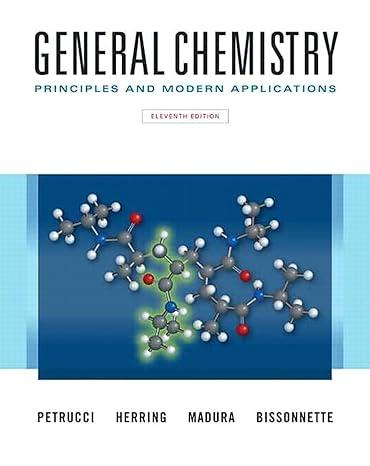(A) 40 K undergoes radioactive decay by electron capture to 40 Ar and by emission...
Question:
(A) 40K undergoes radioactive decay by electron capture to 40Ar and by β– emission to 40Ca. The fraction of the decay that occurs by electron capture is 0.110. The half-life of 40K is 1.26 x 109 years. Assuming that a rock in which 40K has undergone decay retains all the 40Ar produced, what would be the 40Ar/40K mass ratio in a rock that is 1.5 x 109 years old?
(B) Most nuclear power plants use zirconium in the fuel rods because zirconium maintains its structural integrity under exposure to the radiation in the nuclear reactor. The nuclear accidents at Three Mile Island, Chernobyl, and Fukushima involved the evolution of hydrogen gas from the reduction of water. The half-cell reduction potential for Zr is
![]()
(a) Can Zr reduce water under standard-state conditions?
(b) Calculate the equilibrium constant for the reduction of water by zirconium.
(c) Is the reaction spontaneous if the pH = 7 and Zr, ZrO2, and water are in their standard states?
(d) Was the reduction of water by Zr the culprit in the reactor accidents mentioned above?
Step by Step Answer:

General Chemistry Principles And Modern Applications
ISBN: 9780132931281
11th Edition
Authors: Ralph Petrucci, Jeffry Madura, F. Herring, Carey Bissonnette





